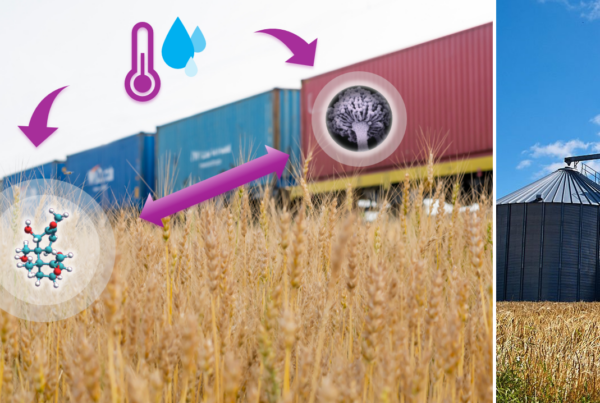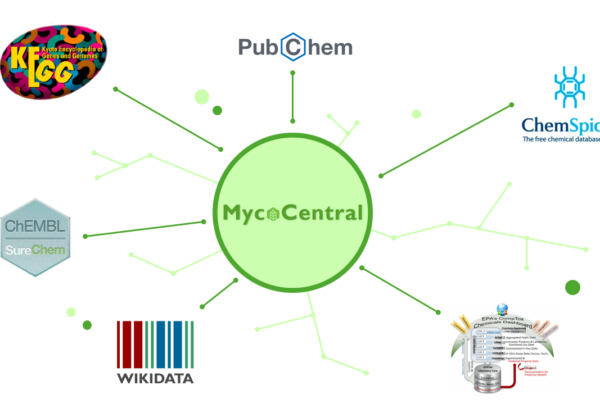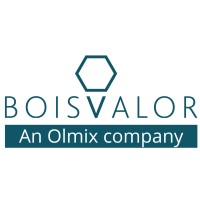Olmix Group hosted a scientific seminar within the official program of the prestigious event in Montréal, Canada.
Held in Montréal (Canada) from 15th-18th July, the Poultry Science Association Annual Meeting 2019 gathered more than 1,200 poultry scientists and professional experts from all over the world to share and learn about the latest advances in poultry science and research.
In this context, Olmix Group was selected to organize a symposium within the scientific program of the event, where renowned international speakers highlighted the importance of the immune system and gut health in the current context of poultry production, as well as mycotoxin risk management and the newest available diagnostic technologies to monitor animals’ exposure to mycotoxins.
Development of the immune system in poultry and the cost of impaired immunity
Moderated by Olmix Group’s Marketing Director, Ms Danièle Marzin, and attended by more than 200 participants, Prof. Dr. Bernd Kaspers (University of Munich, Germany) opened the symposium by giving an insight into the unique features of the avian immune system and the importance of microflora and bacteria in animals.
“The complexity of the immune system is not only that it is composed of several types of cells, but they develop and differentiate through time, and also they migrate to different tissues. Early gut colonization with proper microflora is essential to the development of immunity in animals… Actually, the contact with bacteria is essential for a proper development of the immune system and provide a good protection!,” Dr. Kaspers explained, thus paving the way to Prof. Van Immerseel (Ghent University, Belgium), who later on went on stage to, precisely, focus on what the cost of the activation of the immune system involves:
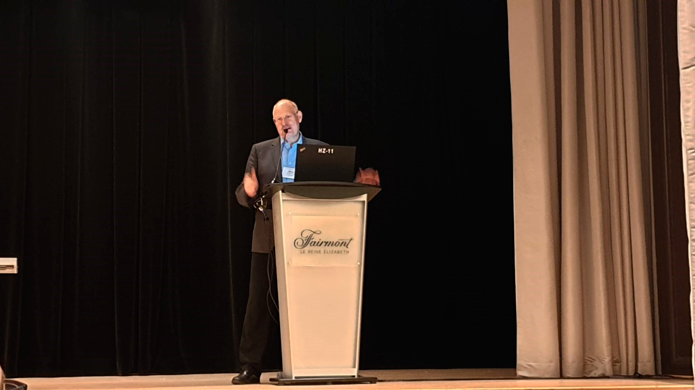
Prof. Dr. Bernd Kaspers (University of Munich, Germany).
Prof. Dr. Bernd Kaspers (University of Munich, Germany).
“We do need to quantity the cost of activation of the immune system if we aim to have a good performance. In fact, we have developed specific challenge models with pathogens to observe the interaction gut/microbiome and their effect on gut integrity. We now know that damages and losses in gut integrity are the main cause of inflammation. Even new quick techniques analysing specific proteins in feaces correlated with inflammation are developed actually to be used directly at farm!,” he said.
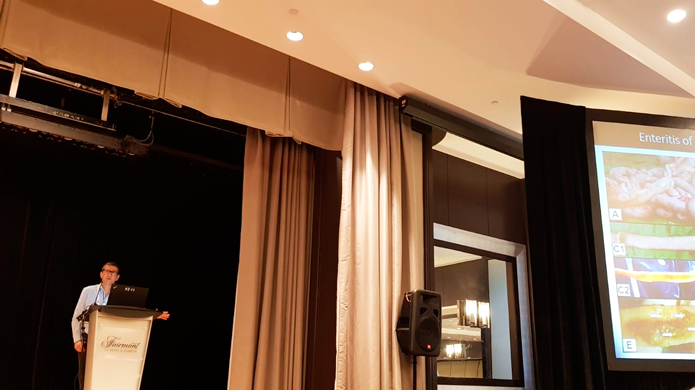
Prof. Van Immerseel (Ghent University, Belgium).
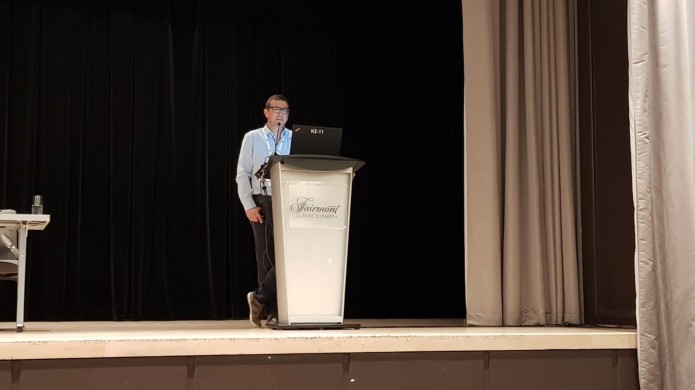
Prof. Van Immerseel (Ghent University, Belgium).
Mycotoxin risk management
The symposium not only offered high-level key notes about immunity and gut health, but also about mycotoxin risk, and especially how they influence those parameters. Then, it was only natural for Dr. Isabelle Oswald, from INRA (France), to take up the torch to update the poultry community on mycotoxin risk and its effects on poultry gut health:
“Polycontamination is the rule, not the exception. Among mycotoxins, fumonisin B1 and deoxynivalenol have a great impact on zootechnical parameters. These mycotoxins are not only locally toxic for the intestine, but also dysregulate many intestinal functions and impair the local immune response. Fumonisin is promoting the development of e coli in different segments of the intestinal tract so promoting the sensitivity of animals to infection. On the other hand, in an ‘in vitro’ experience analysing gut integrity, DON proved to increase the passage of toxic molecules and translocation of pathogens in pig and poultry. So, DON has a detrimental effect on the proliferation physiology, the barrier function and inflammation,” she assured.
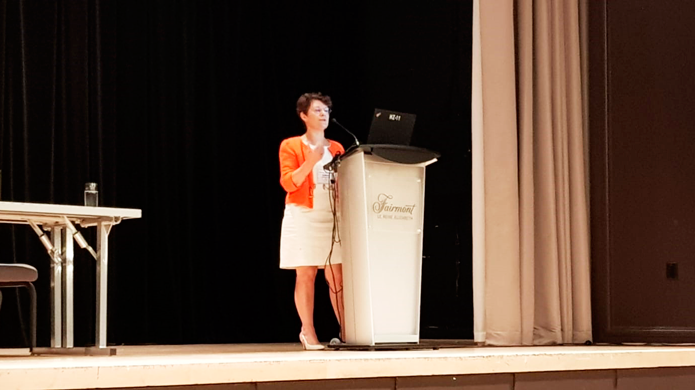
Dr. Isabelle Oswald, INRA (France).
Mycotoxins are indeed a worldwide problem that needs to be prevented; that is why several protocols to analyze mycotoxins in raw materials and feeds have come up in the recent years. But there is one technology in particular, NIR, that, according to Prof. Mallmann (LAMIC, Brazil), is raising itself as a very promising alternative for the feed industry:
“We need to use intelligence in the mycotoxin risk management, starting by right sampling, right analysing, and checking that those analyses are right by checking the effect on animals. Mycotoxin analysis is a key tool in mycotoxin risk management in the feed. The control of raw materials must be accurate and quick to be an efficient decision-making tool. NIR is a green technology, non-invasive, that allow multi-analyses with no reagent consumption. I can say that it is the fastest, simple and low-cost technology for the detection of mycotoxins that employs near-infrared spectroscopy. NIR is also accredited by FAPAS, the highest UK proficiency test.”
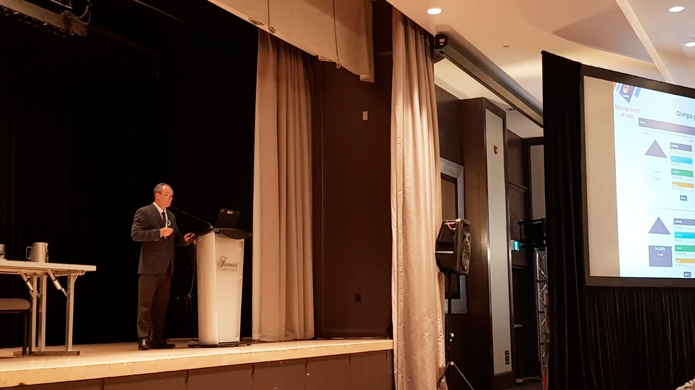
Prof. Mallmann (LAMIC, Brazil).
Then, it was turn for María Ángeles Rodríguez, Olmix Group’s For Feed Product Manager, to close the event by giving a comprehensive review of detoxification strategies of feed that are used by the inductry:
“The most cost-effective strategy to counteract the effects of these mycotoxins occurring in polycontamination in the feed industry is to use mycotoxin detoxifying agents. We can talk about adsorbing agents, which help to decrease mycotoxin bioavailability by including them in the compound feed, leading to a reduction of mycotoxin uptake. Also, we have biotransforming agents, aiming to degrade mycotoxins into less toxic metabolites by using microorganisms or enzymes. Many parameters are to be taken into account, including also the evaluation method used to study these agents. ‘In vitro’ results should be analyzed and interpreted carefully and complementary ‘in vivo’ trials on performance should be available to conclude on an agent efficacy.”
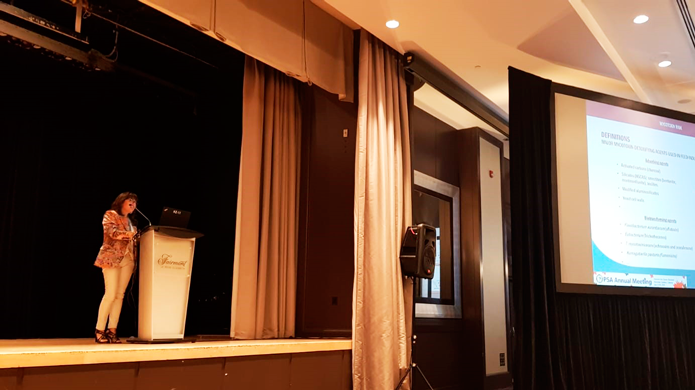
María Ángeles Rodríguez, Olmix Group’s For Feed Product Manager.
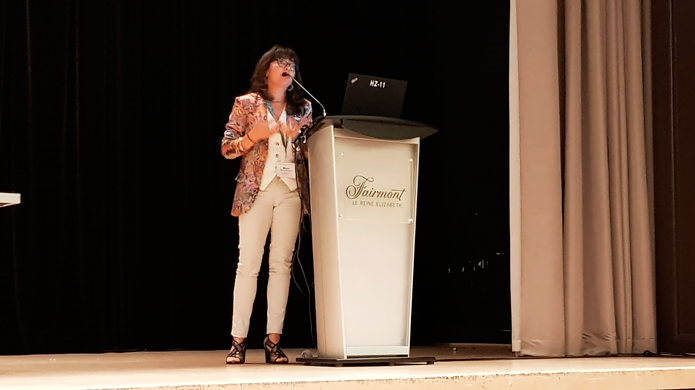
María Ángeles Rodríguez, Olmix Group’s For Feed Product Manager.
